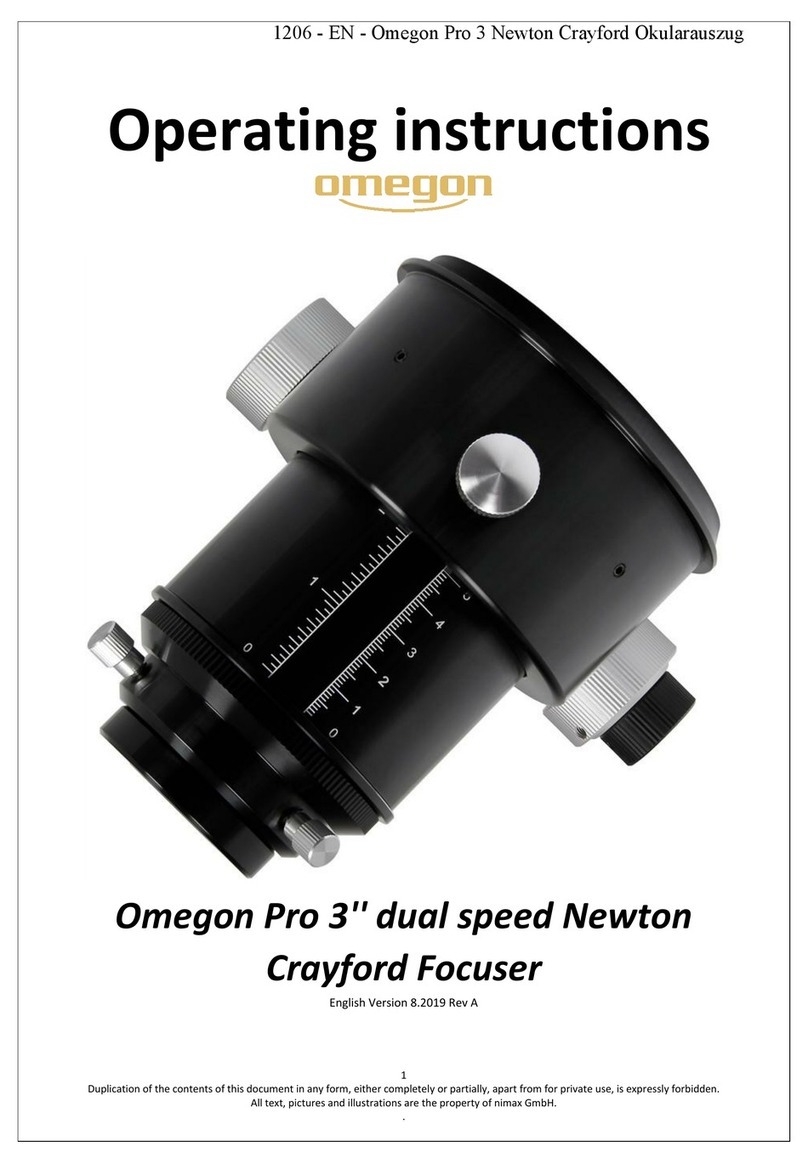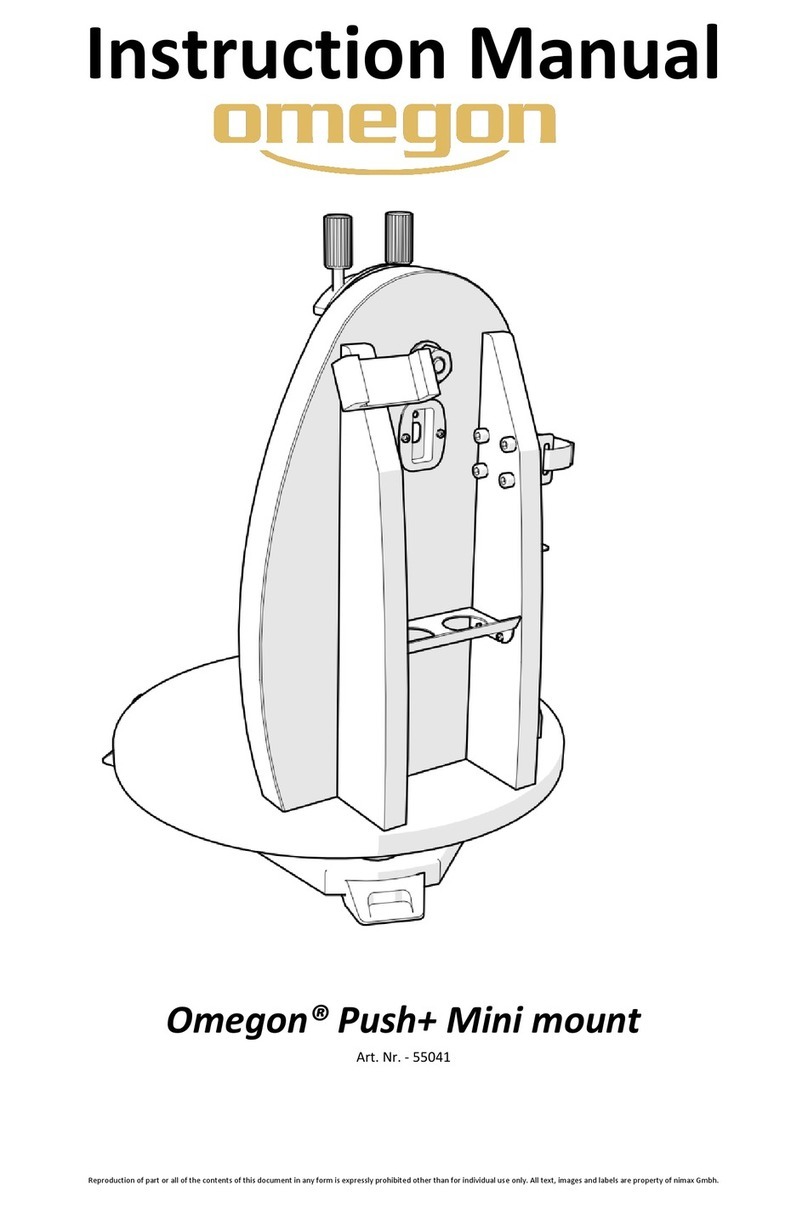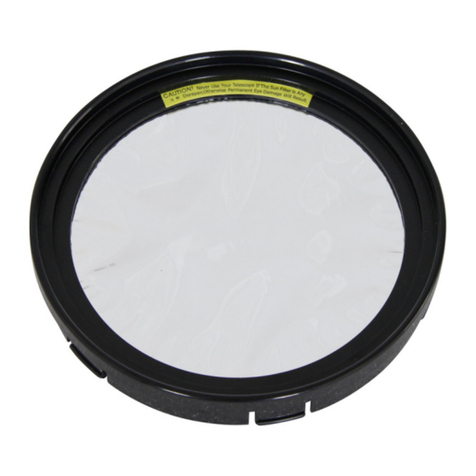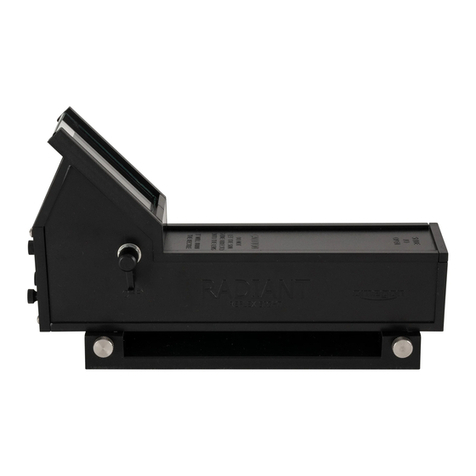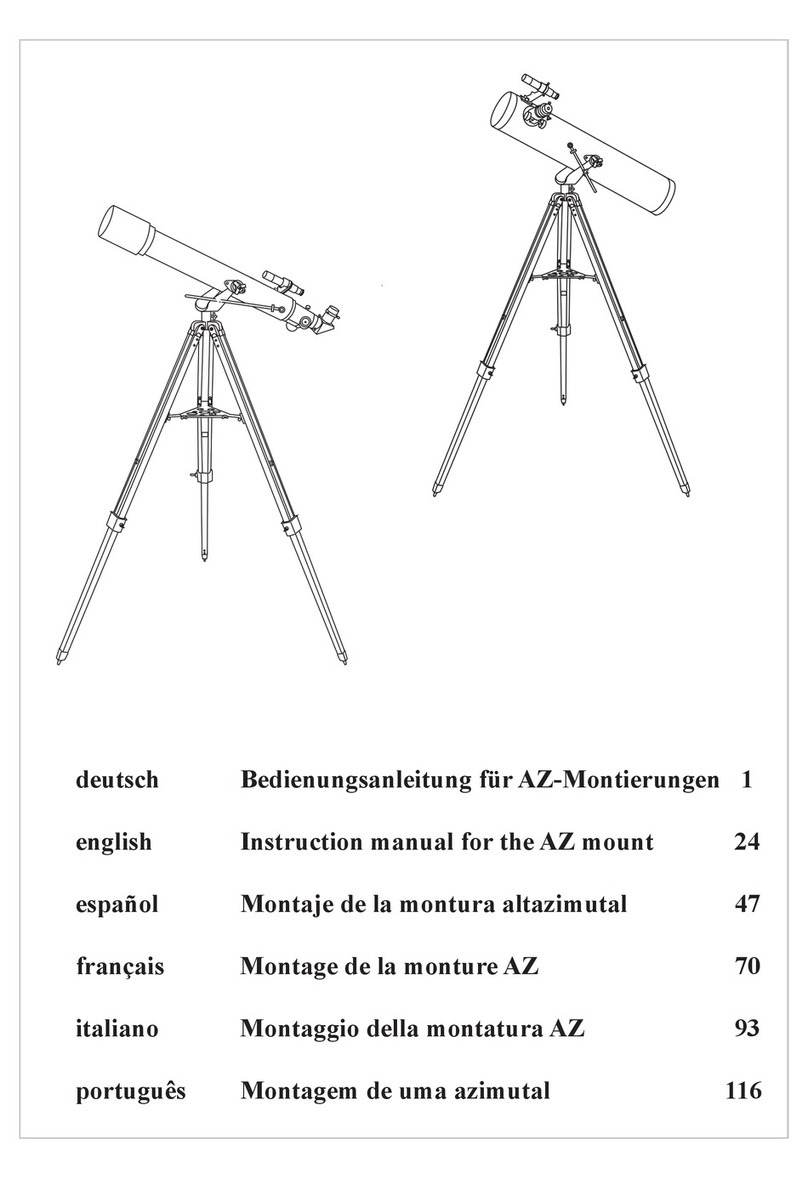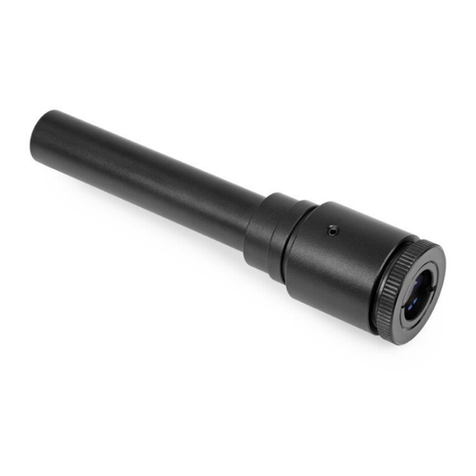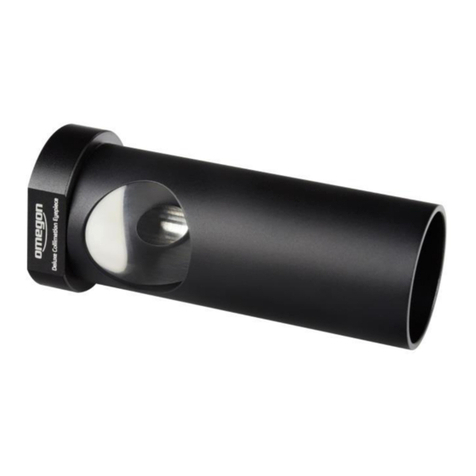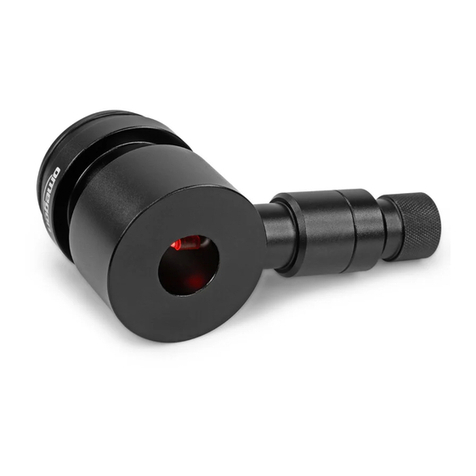Reproduction of part or all of the contents of this document in any form is expressly prohibited other than for individual use only. All text, images and labels are property of Nimax Gmbh.
The Omegon® EQ-500 X
Congratulations to your new Omegon® EQ 500 X. This German equatorial telescope mount is designed to give you years of
rewarding observations, thanks to durability and a high quality built. The mount can carry equipment weighing up to 10 kg.
The Vixen-Style (GP) saddle makes it compatible with most small and medium sized telescope.
Compatible telescopes
- Newtonian telescopes up to 200mm (8”) aperture
- Refractor telescopes up to 130mm (5”) aperture
- Cassegrain telescopes up to 235mm (9.25”) aperture
- Maksutov telescopes up to 200mm (8”) aperture
What’s included?
1- Stainless steel tripod
2- German equatorial mount head
3- Counterweight bar
4- Fine adjustment knobs (2)
5- Counterweights (2)
6- Tripod spreader plate
Introduction to equatorial mounts
The purpose of a telescope mount is not only to hold your telescope at a convenient height, but mainly to keep it balanced
and steady during observation. At the same time, it allows you to easily point the telescope in any direction. The Omegon®
EQ-500 X is an equatorial mount and hence offers even further convenience for observing the night sky. It is designed to
compensate for the Earth’s rotation.
Because of the rotation of the Earth and with it the telescope and the observer, the whole sky shows an apparent
movement and all stars seem to rotate around you once in 24 hours. While this movement is almost imperceivable to the
naked eye, it is very noticeable with the high magnification of a telescope. The Objects you want to observe can move out
of your field of view in just a short moment. Constant readjustment of the telescope’s direction is necessary. The
Equatorial mount makes these readjustments very easy and allows for comfortable observation sessions. If aligned
properly, a slow rotation of a single fine motion knob is enough to keep your observation targets from escaping your view.
The EQ 500 X has four axes:
Two axes, the altitude and azimuth adjustments, are only used to properly polar align the mount. After you finished the
polar alignment, you shouldn’t touch these adjustments anymore.
The other two axes, RA-axis and DEC-axis (right ascension and declination), are used to move the telescope and point it in
any desired direction. These axes each have one clamp. By opening the clamp, you can manually move the telescope along
the corresponding axis. Once you close the clamp, the telescope’s orientation is fixed along this axis. You can now only
move it with the corresponding slow-motion knob. The RA- and DEC-axis each have one slow motion knob. By turning
them, you can control the telescopes direction very finely. The slow-motion knob of the RA-axis is used to compensate for
the Earth’s rotation.
When aligned correctly, the mounts RA- and DEC-axis corresponds to the equatorial celestial coordinate system. Each star,
nebula or galaxy in the sky has a fixed set of celestial coordinates, which can be looked up in celestial maps. This makes an
equatorial mount like the Omegon® EQ-500 X ideal to use in combination with a star atlas.
